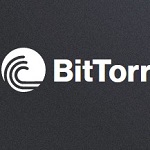

PowerShellMaxCmdletsTimePeriod – defines the time period used by PowerShellMaxCmdlets and ExchangeMaxCmdlets in seconds. Now, that we looked at the first eight components there is only one left: PowerShell. For this reason, the value of PercentTimeInCAS should always be set higher than both PercentTimeInAD and PercentTimeInMailboxRPC. This means that when a process does an LDAP request, for example, it is both consuming PercentTimeInAD and PercentTimeInCAS.
#IPS WERE THROTTLED BY RECIPIENT SERVER CODE#
If you think about it, for a process to make an AD or RPC call, it has to be running CAS code already. This is because PercentTimeInCAS overlaps PercentTimeInAD and PercentTimeInMailboxRPC. To complicate things a little more, the value of PercentTimeInCAS is always higher or the same as PercentTimeInAD and PercentTimeInMailboxRPC. If a user had 3 processes running at the same time and running tasks that take the same time, this means each process could spend 30 seconds per each minute running CAS code (3×30 = 90 seconds or 150% of 60 seconds).

The value of 50 indicates that for every period of 1 minute, the Web Services process can spend 30 seconds with LDAP requests.īut what about that value of 150? Does that mean that per each minute a process can spend 90 seconds consuming resources? Not exactly as we have to consider concurrent requests! A value of 150 allows two or more processes to spend 90 seconds in total per each minute. Let’s take two examples: EWSPercentTimeInAD (50 by default) and OWAPercentTimeInCAS (150 by default). These indicate the percentage of a minute that a user can spend respectively: The PercentTimeInCAS, PercentTimeInAD, and PercentTimeInMailboxRPC parameters are not as straightforward as the MaxConcurrency one. To set it to unlimited (unthrottled), as with all the other parameters, simply set the value to $null.įor example, EASMaxConcurrency is set to 10 by default, meaning users can “only” have up to 10 mobile devices connected at the same time using ActiveSync.

The valid values for MaxConcurrency range from 0 to 2147483647. If the user tries to make more concurrent connections than the ones set in his/her policy, the new connections fail but existing ones are not affected. The MaxConcurrency policy parameter specifies how many concurrent connections a user can establish to an Exchange server at one time.Ī connection is first established when Exchange receives a request from a user and is closed when a response is sent back. UM users are considered Exchange Web Services users and, as such, are throttled by EWS parameters. If you are wondering if Unified Messaging users are throttled or not, the answer is “yes, they are”. The end result is OWAMaxConcurrency or EASPercentTimeInAD for example. Table 1: Exchange Client Throttling Parameters and ComponentsĪlthough there are dozens of configurable parameters, in this article we will address most of them, but not all – only the main ones.Įach cell of this table is a combination of like EAS, POP or OWA and such as MaxConcurrency. So what does Exchange 2010 now monitor that Exchange 2007 didn’t? As I mentioned before, with Exchange 2010 it’s not just RPC requests that are monitored, but 9 different components: In this article we will be talking only about Client Throttling. There is also Message Throttling in Exchange that restricts the number of messages and the number of connections that can be processed by an Exchange Transport server. Its purpose is still to ensure that users are not intentionally or unintentionally straining Exchange and that users share resources proportionally. In Exchange 2010, Client Throttling has been much improved, monitoring and controlling much more than just RPC requests. When Exchange determines that a client is having a negative effect on the server, it will send a “back-off” request to the client telling it to delay sending any additional requests for a specified time (maximum of 2000 milliseconds) in order to reduce the performance effect on the server. Exchange 2007 introduced a feature called RPC Client Throttling to allow administrators to manage end-user performance by preventing client applications, such as Outlook for example, from sending too many Remote Procedure Call requests per second to Exchange, causing the server to suffer in terms of performance.


 0 kommentar(er)
0 kommentar(er)
